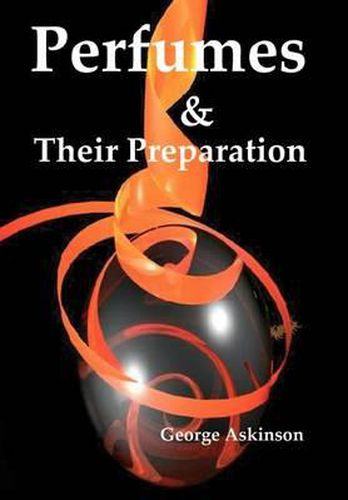Readings Newsletter
Become a Readings Member to make your shopping experience even easier.
Sign in or sign up for free!
You’re not far away from qualifying for FREE standard shipping within Australia
You’ve qualified for FREE standard shipping within Australia
The cart is loading…






Purchase of this book includes free trial access to www.million-books.com where you can read more than a million books for free. This is an OCR edition with typos. Excerpt from book: A few facts appear to us of especial importance. In practical perfumery many of the plants which are easily obtainable in large quantities, such as the flowers of clover and trefoil, the primrose, the rock-rose (Daphne Cneorum), dame’s-violet (Hesperis matronalis), and others above named, have never been employed. As an actual curiosity we may state that there is thus far no perfume containing the delightful odor present in the flowers of the linden-tree, of the Robinia (erroneously called Acacia), of the lilac, etc., at least not made from the plants here named. CHAPTER V. THE ANIMAL SUBSTANCES USED IN PERFUMERY. While the vegetable kingdom offers us an abundance of aromatic odors the end of which it is impossible to foresee, the animal kingdom contains absolutely no substance which may be called sweet-scented in the strict sense of the term. If we find nevertheless a few animal substances generally used in perfumery, they should be considered rather as excellent means for fixing subtle vegetable odors than as fragrant bodies in the true sense. By themselves, indeed, they have an odor, but to most persons it is not agreeable even if properly diluted. Thus far only five substances of animal origin are employed in perfumery, namely: ambergris, castor, hyraceum, musk, and civet. Ambergris. Latin?Ambra grisea; French?Ambregris; German?Ambra. This is a substance whose origin is still doubtful; many facts indicate that it is a secretion?whether normal or morbid may be left undecided?of the largest living mammal,namely, of the pot-whale (Physeter macrocephalus). Ambergris is found in the intestines of this animal or, more frequently, floating about in the sea; the shores of the continents bordering the Indian Ocean furnish the largest amount of this peculiar substance. …
$9.00 standard shipping within Australia
FREE standard shipping within Australia for orders over $100.00
Express & International shipping calculated at checkout
Purchase of this book includes free trial access to www.million-books.com where you can read more than a million books for free. This is an OCR edition with typos. Excerpt from book: A few facts appear to us of especial importance. In practical perfumery many of the plants which are easily obtainable in large quantities, such as the flowers of clover and trefoil, the primrose, the rock-rose (Daphne Cneorum), dame’s-violet (Hesperis matronalis), and others above named, have never been employed. As an actual curiosity we may state that there is thus far no perfume containing the delightful odor present in the flowers of the linden-tree, of the Robinia (erroneously called Acacia), of the lilac, etc., at least not made from the plants here named. CHAPTER V. THE ANIMAL SUBSTANCES USED IN PERFUMERY. While the vegetable kingdom offers us an abundance of aromatic odors the end of which it is impossible to foresee, the animal kingdom contains absolutely no substance which may be called sweet-scented in the strict sense of the term. If we find nevertheless a few animal substances generally used in perfumery, they should be considered rather as excellent means for fixing subtle vegetable odors than as fragrant bodies in the true sense. By themselves, indeed, they have an odor, but to most persons it is not agreeable even if properly diluted. Thus far only five substances of animal origin are employed in perfumery, namely: ambergris, castor, hyraceum, musk, and civet. Ambergris. Latin?Ambra grisea; French?Ambregris; German?Ambra. This is a substance whose origin is still doubtful; many facts indicate that it is a secretion?whether normal or morbid may be left undecided?of the largest living mammal,namely, of the pot-whale (Physeter macrocephalus). Ambergris is found in the intestines of this animal or, more frequently, floating about in the sea; the shores of the continents bordering the Indian Ocean furnish the largest amount of this peculiar substance. …